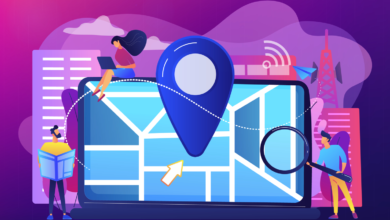Content Personalization: What Is It?

Do customers find relevant, informative content when they search for your business or visit your website?
How do you create a smoother, more frictionless experience right from the start of your sales journey?
Creating meaningful experiences through personalized content is a great place to start.
If you are not constantly testing, analyzing and refining your customer experience strategy, you risk losing your current and potential customer base.
Content marketing is one of the most integral components of the customer experience.
However, many content marketers neglect creating relevant and useful content, and instead focus on how the content benefits their business rather than the customer.
In this post, we’ll explore what exactly personalized content is, how it benefits the end user, examples of personalization, and how to create a successful content personalization strategy.
Let’s get started.
What is personalized content?
Customers crave personalization in every aspect of life – from their shopping preferences to the types of food they eat and the styles of home décor they desire.
They are more likely to spend their time and money on products and services that match their preferences, wants, and needs.
For example, let’s say you’re shopping for black winter boots on a retailer’s website and you view several product pages that feature different boots, but don’t actually buy anything.
When you checkout the page, later I email you a promotional 20% off retailer’s winter jackets.
In this case, you may ignore the retailer’s email and even completely unsubscribe from their email list, as you are presented with irrelevant content.
This example stops the user journey rather than moving it down the sales funnel.
It would have been better to provide engaging content based on the customer’s pre-determined shopping preferences and the items they are actually looking for.
The case for building a content personalization strategy
A content personalization strategy entails leveraging insights from online consumer data to deliver relevant content.
By constantly monitoring and analyzing this data, brands can, in turn, better understand the interests and motivations of their end users.
Highlighting relevant and timely information improves a user’s online experience, which leads to increased conversions and sales.
Research has shown that 80% Consumers are more likely to buy from a company that provides a personalized experience, which increases the need for a personalized content marketing strategy.
The results of content personalization are tangible for businesses, too.
Ninety seven percent Marketers reported a significant increase in their personalization efforts.
Plus, a separate study found that 51% of retailers with a comprehensive personalization strategy achieved 300% or more ROI.
Knowing personalization can improve conversion rates, how can content marketers improve this effort? We’ll explore that next.
How can I personalize my content?
Creating individual content sounds ideal in theory, but how can your business take on this endeavor effectively?
As a savvy marketer, you must understand the ideal target demographics and personas that make up your audience.
Your audience will likely have different wants and needs.
Thinking about the previous winter footwear example and applying it to your audience, it is likely that different members of your audience will have varying budgets, style preferences, and uses for the footwear.
This is where audience segmentation comes into play.
Whether your business uses Google Analytics, another web analytics service, or a personalization software solution, you can segment your audience into groups.
By segmenting your audience segments and behaviors, you’ll better understand what types of content each group will engage with best and what will resonate best.
User behavior insights include:
- buying behaviour.
- Pages visited.
- Events visited.
- Location data.
- customer life cycle.
- time spent on the site.
- Buyer personas.
- Engagement metrics.
In general, four methods can be used for audience segmentation, which we will explain in more detail below.
demographic allocation
Demographic personalization involves segmenting your audience based on demographics and other behavioral factors. This may include customer targeting based on:
- Omar.
- geography.
- language.
- gender.
- Job title.
- hardware used.
- browser.
- screen resolution.
- Device category (desktop, mobile, tablet, etc.).
- and more.
Demographic customization can help provide more relevant information, but it shouldn’t be the only way your business cuts off your audience.
Personalization based on personality
Every business should have a solid understanding of their ideal buyer persona – from what their target customer looks like to how they shop, work and act.
Persona-based personalization goes deeper than just understanding your audience demographics.
It entails understanding the purchasing drivers, pain points, challenges and the user’s role in the purchasing decision.
For more complex purchases, there will likely be several main characters for whom you will want to develop content.
Personalizing content for each key decision maker allows you to communicate with a broader audience of stakeholders and address their concerns more effectively.
For example, a senior CFO may want to know how to solve their problems at the lowest cost. The manager may focus on ease of use, training and implementation.
Each character will have a different pain point. It is up to your company to explain how you can resolve the various pain points of each stakeholder.
To get this deeper level of information, ask your customers to fill out a brief online survey after purchase.
keep your online questionnaire short; Every question asked should have a purpose for evaluating the client or your business.
You can also build customer profiles through your email marketing efforts. Ask your customers to sign up for your emails during the checkout process.
Allow customers to set their own email preferences, from the type of content they want to receive from your business to the frequency of emails they want to receive from you.
These insights will help you differentiate the types of content your customers want to receive from you.
Personalize the buyer’s journey
Delivering content based on where users are in the sales funnel is crucial.
For example, if a customer finds your business through search, they are likely to be in the awareness stage and compare you to competitors.
They are looking for more information to help guide their buying decision at this point.
A business may benefit from sharing content in the form of a blog post, video, or social content in the awareness phase.
If the customer has already made previous purchases with you, they will want more personalized content.
In the previous retailer example, if a customer bought black shoes from you before, they might entice them to buy from you again with an SMS at 15% off.
When your digital marketing team creates compelling content that anticipates and matches buyer interests and stage of the sales journey, you increase your chances of conversion and drive more qualified leads.
Content insights will also enable digital marketers and sales teams to better understand what content has the most impact, so you can better customize your content calendar and frame your sales approach when it’s time to call.
private individual customization
The above three approaches to personalized content will help elevate your personalization strategy. However, you are still creating marketing content for a larger target audience.
Customers want to feel like they are more than just a number.
An Adobe survey found that 42% of consumers say seeing personalized content from a company is somewhat or very important. In the same survey, 35% of consumers stated that personal experiences improve their perception of a business.
Clearly, consumers are no longer accepting of one-size-fits-all content experiences.
Segmenting individual consumers may seem like a daunting task to accomplish manually, which is why companies mainly rely on machine learning and AI technology to get the job done.
Through machine learning and artificial intelligence, content is delivered using first and third party data to best serve consumer needs.
This type of personalization ensures that only appropriate digital content is served to the consumer. This could look like special offers, personalized landing pages, specific product recommendations, personalized emails, and more.
What are some examples of content personalization?
Many of the industry’s biggest and best-known innovators shape their user experiences around personalization.
Netflix is a familiar household name and a service known to many.
like Netflix sharesCustomization plays a huge role in its mission.
Personalized recommendations on the Netflix homepage are based on a user’s viewing habits and the behavior of similar users. Curated for effective browsing, these recommendations enable users to discover the next great video to watch and enjoy without additional input or an explicit expression of their intentions or goals.”
Google Discover is another tool that relies heavily on personalization and organizes a feed of content based on a user’s past searches.
The content that surfaces is unique to the individual and what Google’s automated systems believe is a good match to the individual’s interests.
For example, if you often look up sports scores or the odds of your favorite soccer team winning their next game, you probably have a feed full of sports-related content.
Both companies use complex machine learning and algorithms to drive their personalization efforts.
While most companies cannot implement their personalization strategies to the same level as Netflix or Google, customization solutions can help bridge this gap.
Personalization isn’t going anywhere
The demand for personalization is growing, and more marketers are realizing the benefit of focusing their efforts on improving their customers’ experience.
Netflix, Spotify, Google, Nike, Amazon, and more large companies are prime examples of companies that excel at content personalization. There are other businesses on board, too.
third of the organizations It already spends more than half of its marketing budget on customizing digital content. And 97% of organizations plan to maintain or increase their allocated budget over the next five years.
Cater to customer needs, discontinue broadband content, and develop or ramp up content personalization efforts to improve customer experience (and your return on investment).
More resources:
- 3 ways the best websites personalize their content
- Google announces more personalized search results in on-event search
- Winning at Retargeting: Tips for Reconnecting and Converting
Featured image: Dean Drobot/Shutterstock

![Faster, More Complete Content: How To Rank More In Less Time [Podcast]](https://altwhed.com/wp-content/uploads/2023/01/Faster-More-Complete-Content-How-To-Rank-More-In-Less-390x220.jpg)


